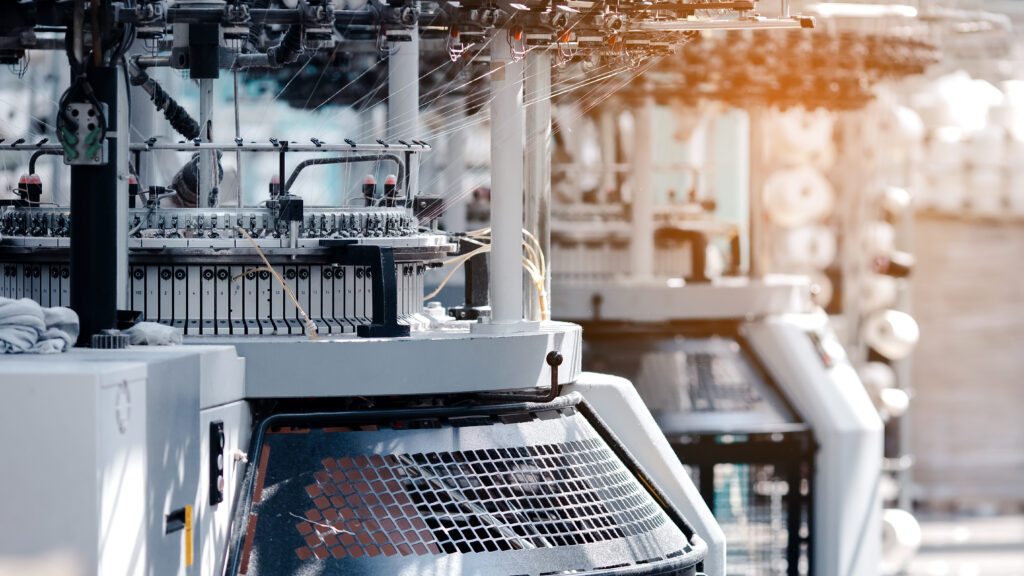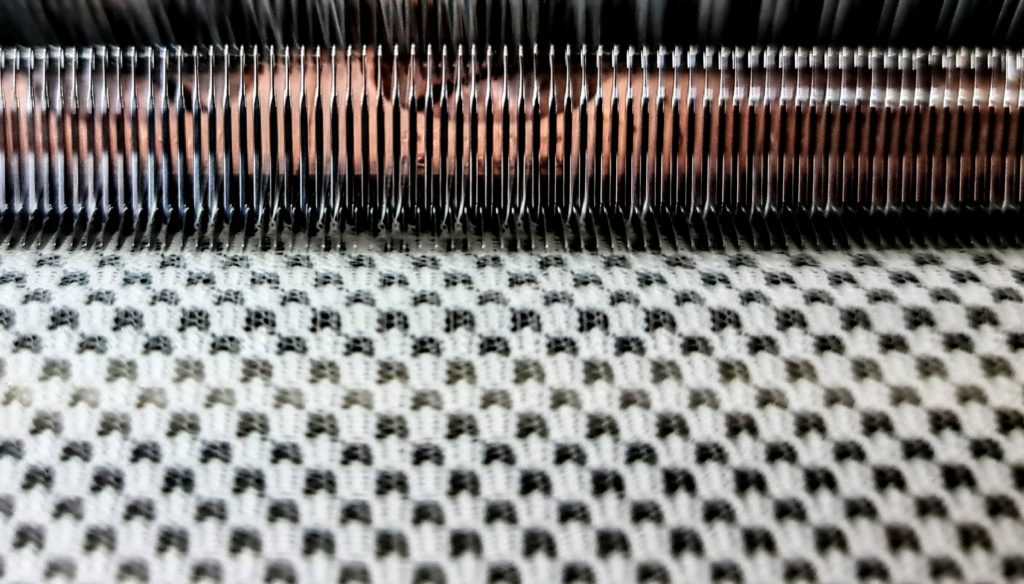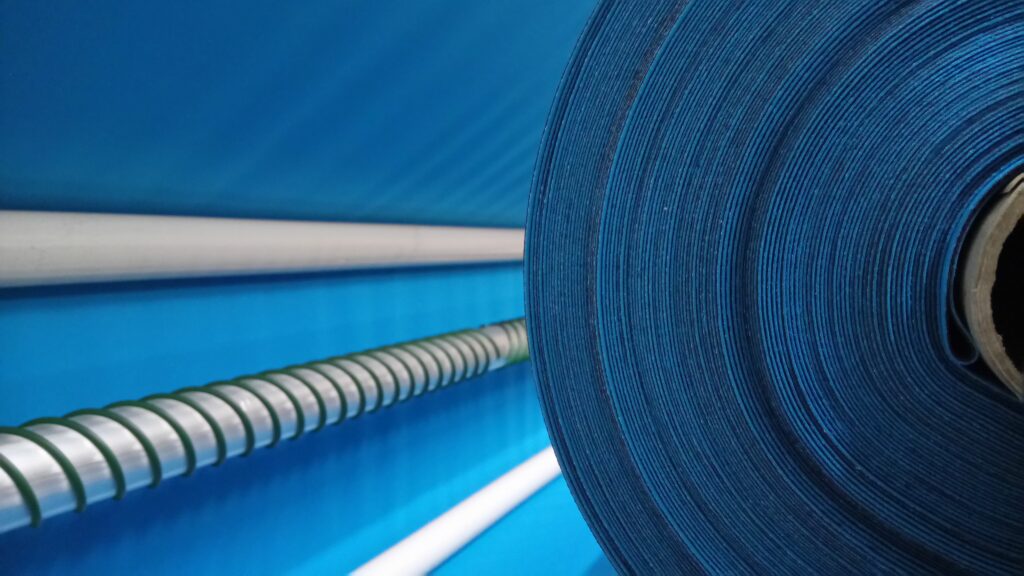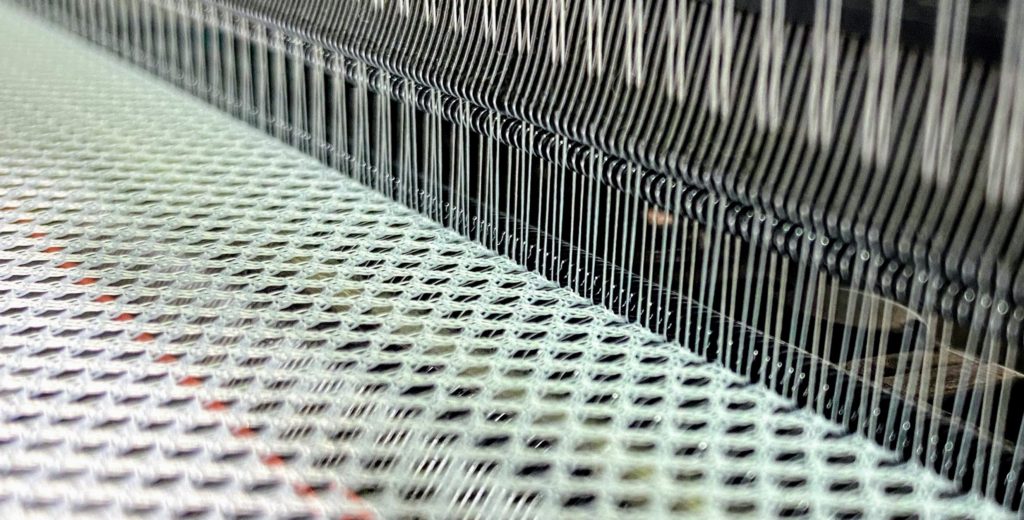


————————————————————————————————————————————————————————————
Warp Knitting vs. Circular Knitting in Sportswear Fabric Production: A Comparison with Common End Uses
Sportswear fabrics need to be functional, durable, and comfortable to meet the demands of active lifestyles. Two key knitting methods in fabric production are warp knitting and circular knitting. Each technique produces fabrics with distinct characteristics, making them suited for specific sportswear applications.
Warp Knitting:
Warp knitting is a machine process where yarns are fed into needles and knitted vertically. The resulting fabrics are durable and often have open, breathable structures.
Key Fabrics & End Uses:
- Mesh Fabric: Highly breathable and lightweight, mesh is often used in sports jerseys, running tops, and ventilation panels in jackets.
- Tricot: A smooth and durable fabric used in track jackets, training pants, and performance outerwear, offering a balance between comfort and structure.
- Raschel Fabric: Known for its open structure, raschel is often used in sports bras, lightweight tops, and swimwear, where breathability and flexibility are important.
Warp knitting’s strength and stability make it ideal for outerwear and apparel that require durability, flexibility, and breathability in high-performance settings.
Circular Knitting:
Circular knitting creates fabric in a continuous tube, resulting in seamless garments with excellent elasticity and comfort.
Key Fabrics & End Uses:
- Jersey Fabric: Soft, stretchy, and breathable, jersey fabric is perfect for t-shirts, yoga wear, and base layers. It’s prized for its flexibility and ability to wick moisture.
- Interlock Fabric: Thicker and more structured than jersey, interlock is commonly used in compression garments, sports bras, and leggings. It provides support and a snug fit.
- Ribbed Fabric: Known for its elasticity, ribbed fabric is ideal for cuffs, waistbands, and fitted tops, offering both comfort and flexibility in high-movement activities.
Circular knitting excels in producing fabrics that mold to the body, making it perfect for tight-fitting sportswear like compression gear, seamless tops, and base layers.
Conclusion:
Both warp and circular knitting techniques are essential in sportswear fabric production. Warp knitting produces stable, breathable fabrics like mesh and tricot, which are excellent for outerwear and breathable layers. Circular knitting delivers flexible, seamless fabrics like jersey and interlock, perfect for body-hugging, high-performance sportswear. By choosing the right knitting method, manufacturers can tailor fabrics to the specific needs of athletes, ensuring optimal comfort and performance.
————————————————————————————————————————————————————————————
The Benefits of Warp Knitting Technology in Flag Fabric Production
Flags are symbols of identity, pride, and representation, whether for nations, organizations, or special events. The fabrics used in flags must withstand various environmental factors while maintaining their vibrant appearance and structural integrity. Warp knitting technology has emerged as a highly effective method for producing durable, high-quality flag fabrics that meet these requirements.
Key Benefits of Warp Knitting for Flag Fabrics:
1. Durability and Stability
Warp knitting produces fabrics with excellent structural stability. In warp knitting, the yarns are interlocked vertically, creating a fabric that is less prone to distortion or stretching compared to other knitting methods. This is especially important for flags, which are constantly exposed to outdoor elements like wind, rain, and UV rays. Warp-knitted fabrics retain their shape and structure over time, ensuring the flag continues to fly proudly without sagging or fraying.
2. Resistance to Weather Conditions
Flags are often subjected to harsh weather conditions. Warp-knitted fabrics are known for their high tensile strength and resistance to wear and tear, making them ideal for use in outdoor environments. They are less likely to tear or fray, even in strong winds, and can endure prolonged exposure to sunlight without significant fading or deterioration. This resilience ensures that flags made from warp-knitted fabrics maintain their appearance and functionality, even in challenging weather.
3. Lightweight and Flexible
Despite their durability, warp-knitted fabrics can be lightweight and flexible. This is a crucial characteristic for flags, which need to flutter and move easily in the wind. Warp-knitted fabrics combine flexibility with strength, allowing flags to wave gracefully while maintaining their form. The lightweight nature of these fabrics also reduces the strain on flagpoles and mounting hardware.
4. Excellent Color Retention
Flags are often vibrant and colorful, representing nations, organizations, or causes. Warp knitting allows for excellent dye penetration and color retention, ensuring that flags maintain their bright, bold colors even after prolonged exposure to sunlight. This is essential for outdoor flags, which need to remain visually appealing for extended periods.
5. Customization and Versatility
Warp knitting machines can create a wide range of fabric structures and patterns, allowing for the customization of flag fabrics to meet specific requirements. Whether a flag requires a more open structure for added flexibility or a tighter knit for enhanced durability, warp knitting technology can accommodate these needs. Additionally, warp knitting supports the integration of various fibers, such as polyester, which are commonly used in flag production for their strength and colorfastness.
6. Cost-Effectiveness
Warp knitting is a highly efficient manufacturing process, allowing for the rapid production of high-quality fabrics at scale. This makes it a cost-effective option for producing flags, especially for large orders or flags used in mass events, parades, or institutional displays. The combination of durability and efficient production reduces the need for frequent replacements, offering long-term cost savings for organizations and governments.
Conclusion
Warp knitting technology offers numerous benefits for the production of flag fabrics, combining durability, flexibility, and weather resistance with excellent color retention and customization options. These qualities make warp-knitted fabrics an ideal choice for flags, ensuring they remain vibrant and structurally sound, even in harsh outdoor environments. By adopting warp knitting technology, manufacturers can produce high-quality flags that not only look great but also stand the test of time, fluttering proudly in the wind for years to come.
————————————————————————————————————————————————————————————
The Benefits of Using Warp Knitting in the Production of Technical Textiles
In the realm of technical textiles, where functionality, durability, and precision are paramount, warp knitting has emerged as one of the most versatile and efficient textile production techniques. From medical textiles to automotive components, technical textiles require high-performance materials capable of withstanding extreme conditions while maintaining specific properties. Warp knitting offers a range of advantages that make it a preferred choice for producing these high-tech fabrics.
What is Warp Knitting?
Warp knitting is a type of knitting where yarns are interlocked in a vertical (warp) direction rather than the horizontal direction seen in weft knitting. Each needle has its own yarn, allowing for the production of complex fabric structures. This method is predominantly machine-based and allows for rapid, large-scale production of durable and high-performance textiles.
Key Benefits of Warp Knitting for Technical Textiles
1. High Dimensional Stability
Technical textiles often need to maintain their shape and performance even under mechanical or environmental stress. Warp knitting creates fabrics with a high degree of dimensional stability, meaning the fabric resists distortion, stretching, or sagging over time. This stability is particularly valuable in applications like construction textiles, geotextiles, and protective gear, where the fabric must retain its structure under load or pressure.
2. Enhanced Durability
Technical textiles are designed for demanding applications where durability is essential. The vertical interlocking structure of warp knitting provides excellent resistance to wear and tear, making the resulting fabric more durable than fabrics produced through other methods. This makes warp-knitted textiles ideal for automotive interiors, industrial filtration fabrics, and sports gear, where long-lasting performance is a critical requirement.
3. Customizable Fabric Structures
Warp knitting offers the ability to create a wide range of fabric structures, from highly open and breathable meshes to dense, robust constructions. This versatility is key for industries that need customized technical textiles for specific applications. For example, in medical textiles, warp knitting can produce lightweight yet strong fabrics for wound dressings, while in aerospace, the technology can create reinforced textiles for components requiring both strength and flexibility.
4. Lightweight Yet Strong
Technical textiles often need to combine lightweight properties with high strength. Warp-knitted fabrics can achieve this balance, offering the strength needed for demanding applications without adding excessive weight. This is particularly valuable in composites used in aerospace and automotive manufacturing, where lightweight materials are critical for efficiency, fuel savings, and performance.
5. Breathability and Flexibility
Many technical textiles, such as performance sportswear, protective clothing, and medical textiles, require a combination of durability and breathability. Warp knitting allows for the production of fabrics that are not only strong but also breathable, with open structures that enable airflow. This makes it ideal for products like sports tech garments, where moisture management and comfort are critical, or medical bandages that require air circulation to promote healing.
6. Resistance to Extreme Conditions
Warp-knitted technical textiles are often used in environments exposed to extreme temperatures, UV radiation, chemicals, or mechanical stress. The method can accommodate the use of high-performance fibers such as aramid, glass fibers, and polyester, giving the resulting fabric excellent resistance to fire, chemicals, or UV exposure. This makes warp-knitted textiles ideal for fire-resistant clothing, filtration systems, protective suits, and environmental barriers.
7. Rapid Production for Large-Scale Applications
One of the significant advantages of warp knitting is its efficiency. The process can produce fabrics at high speeds, making it ideal for large-scale applications where consistent quality is required. In industries such as agriculture, construction, and transportation, where vast amounts of fabric are needed, warp knitting offers an efficient and cost-effective solution without compromising on quality or performance.
8. Seamless Design Capabilities
Warp knitting allows for the creation of seamless fabrics, which is especially important in applications where comfort, flexibility, and durability are crucial. For example, compression garments or seamless medical textiles benefit from this technology, as seams can cause irritation or weaken the structural integrity of the product.
Real-World Applications of Warp Knitting in Technical Textiles
- Medical Textiles: Warp knitting produces high-performance fabrics for surgical gowns, compression bandages, wound dressings, and orthopedic supports. These fabrics offer breathability, flexibility, and strength, making them essential in healthcare settings.
- Automotive Textiles: From seat covers to airbag fabrics, warp-knitted textiles play a key role in the automotive industry. These fabrics are strong, durable, and able to withstand high levels of wear and tear while maintaining aesthetic appeal.
- Protective Gear: Fire-resistant fabrics, bulletproof vests, and other forms of protective clothing often utilize warp-knitted textiles due to their ability to integrate high-performance fibers and create fabrics that can withstand extreme conditions.
- Geotextiles: In construction and environmental applications, warp-knitted geotextiles are used for soil reinforcement, erosion control, and drainage. Their high tensile strength and durability make them suitable for long-term outdoor use.
- Sports and Performance Textiles: Warp knitting technology is frequently used in sports gear, from shoes to apparel, providing athletes with lightweight, breathable, and durable fabrics that enhance performance and comfort.
Conclusion
Warp knitting technology has revolutionized the production of technical textiles, offering numerous benefits that make it an ideal choice for high-performance, durable fabrics. Its ability to produce stable, durable, lightweight, and customizable textiles is invaluable across industries ranging from healthcare to automotive and aerospace. As industries continue to push the boundaries of what textiles can do, warp knitting will remain a cornerstone in the creation of fabrics that meet the highest standards of quality and performance.

